TOUR DU MONT BLANC (1996)
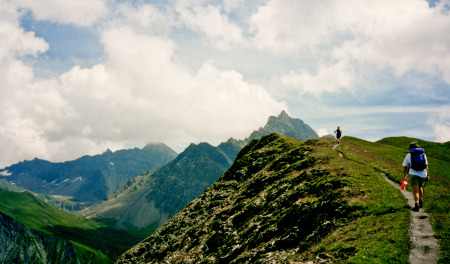 Val Ferret
Val Ferret
We cut our hiking teeth (while eating very well) on this 100-mile circuit of the Mont Blanc massif, beginning and ending in Chamonix, France, and passing through Italy and Switzerland before completing the circle.
PYRENEES (1997)
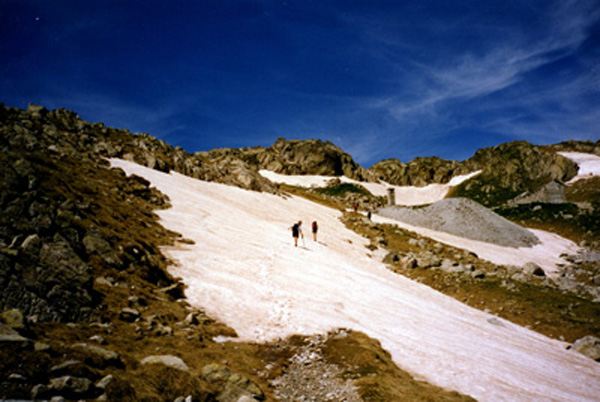 Snowfield south of ArtiesOne of our fellow hikers on the Tour du Mont Blanc had heartily recommended hiking in the Pyrenees. We found a trip that met all our requirements: it was the right sort of length (12 days); it was what was still at that time the right level of difficulty ("rigorous"); and best of all, it was to be led by a guide who was steeped in the flora, fauna and culture of the region - a well-known raconteur who would keep us entertained every step of the way.
Snowfield south of ArtiesOne of our fellow hikers on the Tour du Mont Blanc had heartily recommended hiking in the Pyrenees. We found a trip that met all our requirements: it was the right sort of length (12 days); it was what was still at that time the right level of difficulty ("rigorous"); and best of all, it was to be led by a guide who was steeped in the flora, fauna and culture of the region - a well-known raconteur who would keep us entertained every step of the way.
NORWAY (1998)
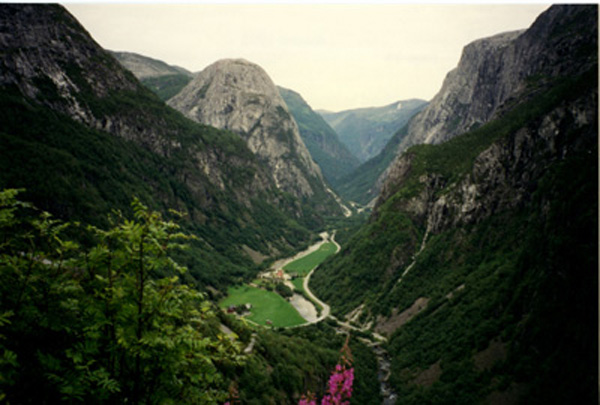 View from Stalheim Hotel to NaeroydalWe had momentary misgivings when we found that few companies offer hikes in Norway. Ever cynical, we suspected the worst. Killer mosquitoes? Weird food? Non-stop rain? In the end the fabled beauty of the country outweighed our concerns and we signed up for a hike whose description, "Mountains and Fjords (Moderate to Strenuous)" seemed to meet our criteria.
View from Stalheim Hotel to NaeroydalWe had momentary misgivings when we found that few companies offer hikes in Norway. Ever cynical, we suspected the worst. Killer mosquitoes? Weird food? Non-stop rain? In the end the fabled beauty of the country outweighed our concerns and we signed up for a hike whose description, "Mountains and Fjords (Moderate to Strenuous)" seemed to meet our criteria.
KILIMANJARO (1999)
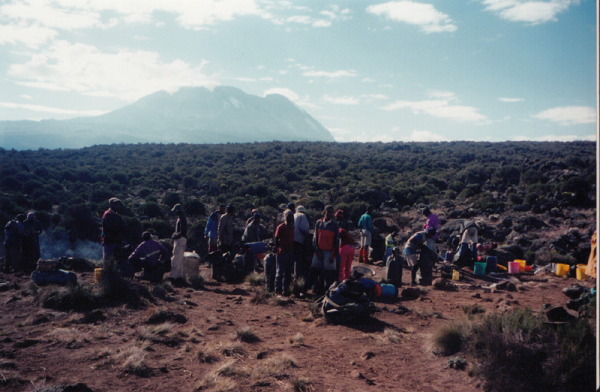 Still a long way to go
Still a long way to go
Why climb Kilimanjaro? A good question, to which, being still only in our sixties, we had a ready answer: Why not? As a mountain, Kilimanjaro can’t compete with Everest, and yet it does have things going for it, including major bragging rights.
NEW ZEALAND (2000)
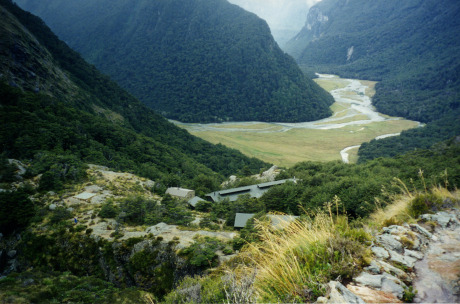 Routeburn Track
Routeburn Track
Getting to the top of Kilimanjaro warrants some kind of a reward, and for us it was taking ourselves to New Zealand the following year. We had never met anyone who didn’t rave about the country, its people, and its white wines. Even if it didn’t promise adventure, we were confident it would deliver pleasure, for which we were eager seekers.
MOROCCO (2002)
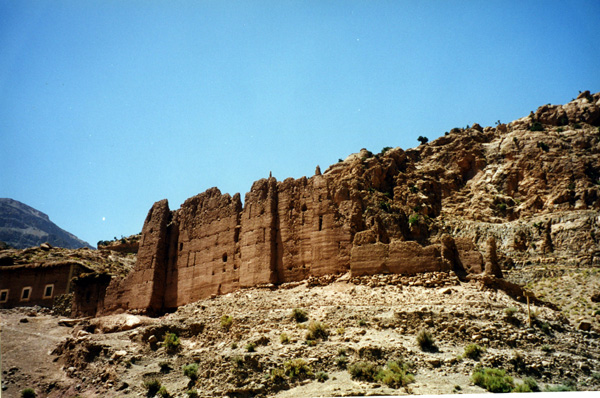 Along the M'Goun RiverMost people love Morocco. We did not love Morocco. We were lured there by Mount Toubkal, North Africa's highest, but being able to add that summit to our list of conquests in no way made up for having to spend time under canvas in the High (and Horribly Hot!) Atlas Mountains in August.
Along the M'Goun RiverMost people love Morocco. We did not love Morocco. We were lured there by Mount Toubkal, North Africa's highest, but being able to add that summit to our list of conquests in no way made up for having to spend time under canvas in the High (and Horribly Hot!) Atlas Mountains in August.
SWISS PASSES (2003)
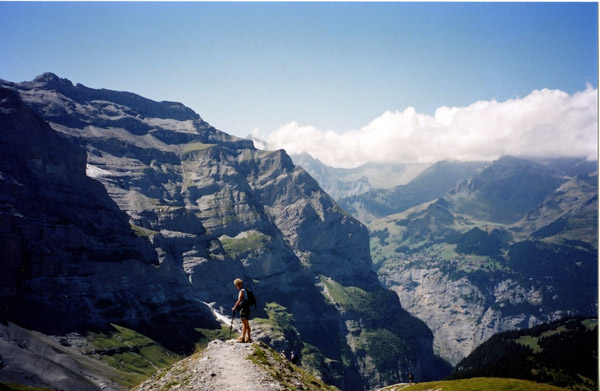 Between Eigergletscher and Wengen, with Ellie After trudging through the High Atlas Mountains in Morocco the previous year, we badly needed something to rekindle our interest in hiking, and what better antidote could we come up with than Switzerland? And the seven high passes, provided we got up and down them, would restore our confidence. Morocco had given us nagging doubts as to whether we were getting a bit old for hiking. Switzerland set that right; we were not.
Between Eigergletscher and Wengen, with Ellie After trudging through the High Atlas Mountains in Morocco the previous year, we badly needed something to rekindle our interest in hiking, and what better antidote could we come up with than Switzerland? And the seven high passes, provided we got up and down them, would restore our confidence. Morocco had given us nagging doubts as to whether we were getting a bit old for hiking. Switzerland set that right; we were not.
GREECE (2004)
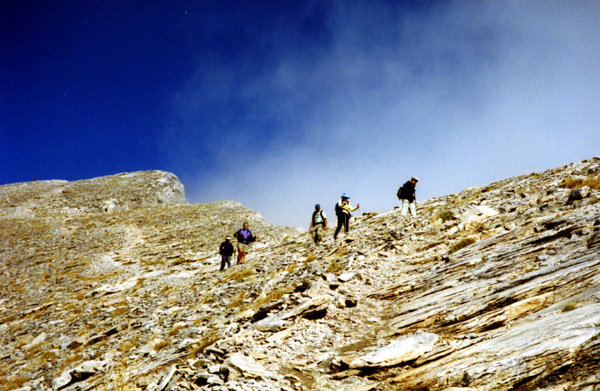 Near the summit of Mount Olympus Switzerland more than restored our enthusiasm for hiking, and the choices of destinations were almost bewildering. We settled on Greece. The hike was to begin with a pleasant ramble through the remote villages of the Pindos Mountains, near the Greek-Albanian border. But what sealed the deal for us was the optional "extension": an ascent of Mount Olympus. Not so very high, but mythologically significant.
Near the summit of Mount Olympus Switzerland more than restored our enthusiasm for hiking, and the choices of destinations were almost bewildering. We settled on Greece. The hike was to begin with a pleasant ramble through the remote villages of the Pindos Mountains, near the Greek-Albanian border. But what sealed the deal for us was the optional "extension": an ascent of Mount Olympus. Not so very high, but mythologically significant.
BUDAPEST-KRAKOW (2005)
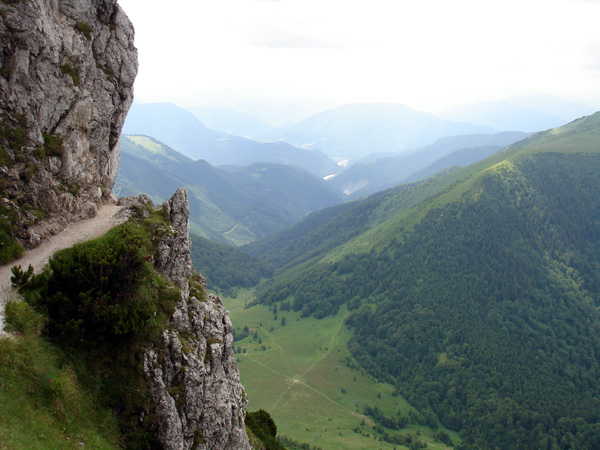 En route to the summit of Velky Rozsutec, SlovakiaBudapest and Krakow are two cities that deserve to be on everyone's must-see list, and finding a hike that appeared to put them within walking distance of each other - or so it seemed from the description - struck us as perfect. On balance they more than justified the hours spent traveling in the bus, but we now read trip notes much more carefully.
En route to the summit of Velky Rozsutec, SlovakiaBudapest and Krakow are two cities that deserve to be on everyone's must-see list, and finding a hike that appeared to put them within walking distance of each other - or so it seemed from the description - struck us as perfect. On balance they more than justified the hours spent traveling in the bus, but we now read trip notes much more carefully.
SCOTLAND (2006)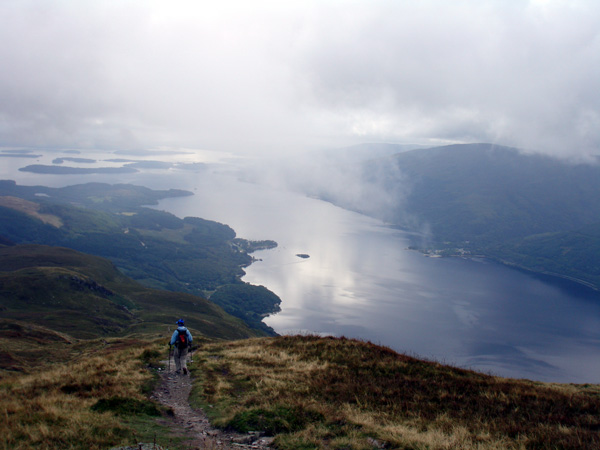 Loch LomondScotland has everything: history, scenery, a sense of humor, a beguiling and sometimes unintelligible accent, and distilleries. Also rain, but never so much that you don't see golfers of all ages, undeterred by the elements, knocking their little golf balls around on the very, very green grass. It's impossible not to fall in love with Scotland.
Loch LomondScotland has everything: history, scenery, a sense of humor, a beguiling and sometimes unintelligible accent, and distilleries. Also rain, but never so much that you don't see golfers of all ages, undeterred by the elements, knocking their little golf balls around on the very, very green grass. It's impossible not to fall in love with Scotland.
AMALFI (2007)
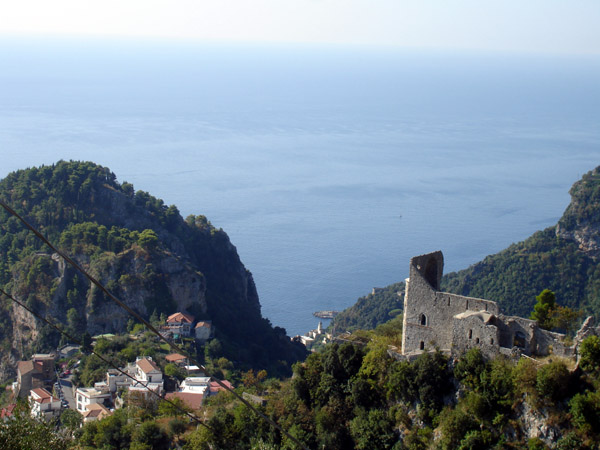 On the Amalfi PeninsulaThis trip promised to show us the unknown Amalfi peninsula, the hinterland in the hills behind the usual tourist route. In other words, all the spectacular beauty without that heart-in-mouth drive along the coastal highway. It did not disappoint.
On the Amalfi PeninsulaThis trip promised to show us the unknown Amalfi peninsula, the hinterland in the hills behind the usual tourist route. In other words, all the spectacular beauty without that heart-in-mouth drive along the coastal highway. It did not disappoint.
BHUTAN (2008) 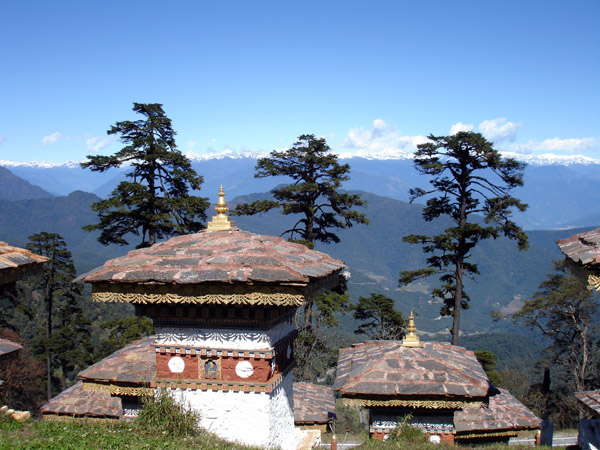 Chortens at Dochula PassEverything we heard and read about Bhutan urged us to make the trip sooner rather than later. It seemed inevitable that such a tiny paradise of a kingdom, snuggling into the Himalayas, would undergo development that would make it even more appealing to tourists, but at the same time rob it of some of its authenticity.
Chortens at Dochula PassEverything we heard and read about Bhutan urged us to make the trip sooner rather than later. It seemed inevitable that such a tiny paradise of a kingdom, snuggling into the Himalayas, would undergo development that would make it even more appealing to tourists, but at the same time rob it of some of its authenticity.
AUSTRALIA (2010)
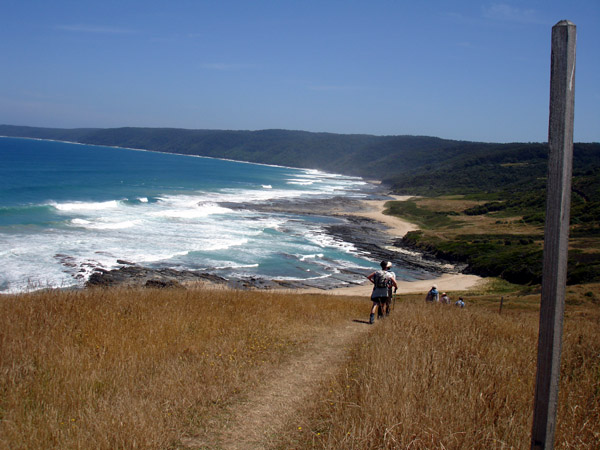 Great Ocean WalkWe couldn't entirely neglect such a large landmass as Australia. The challenge was in trying to select what we should do in the limited amount of time we were able to spend there. We think we nailed it.
Great Ocean WalkWe couldn't entirely neglect such a large landmass as Australia. The challenge was in trying to select what we should do in the limited amount of time we were able to spend there. We think we nailed it.
PATAGONIA (2011)
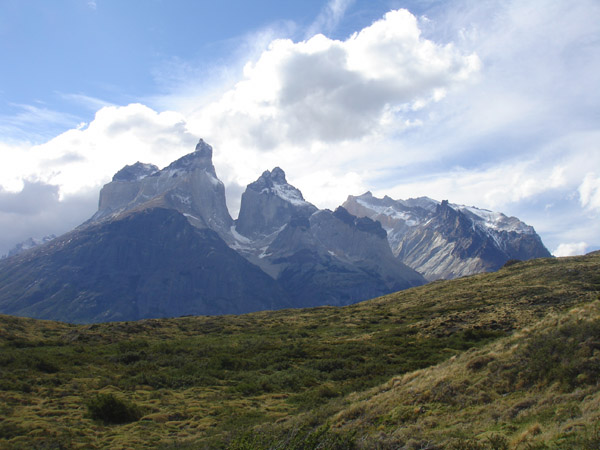 Torres del Paine, Chile
Torres del Paine, Chile
Patagonia kept cropping up. Every time we began bragging about hikes we had taken, someone would throw in Patagonia and start raving about it, trying to steal our thunder. We were running out of excuses as to why we hadn't yet been there and decided to take corrective measures.
DOLOMITES (2012)
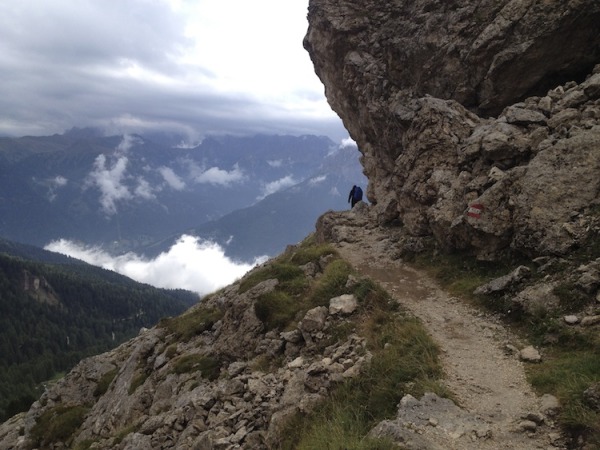
We had skied in the Dolomites with our children many years earlier. After hiking in the same mountains we can confirm that skiing is easier. Provided they have mastered the basic skills of turning and stopping, skiers generally let technology move them upwards and gravity move them downwards. Hikers have to cover the same ground with only their lungs and legs to rely on.
ENGLAND COAST TO COAST (2013)
Cumbria, between Eskdale and Keswick
The Coast-to-Coast in England is another of what are considered the classic walks of the world. The 192-mile walk begins at the Irish Sea and ends at the North Sea, and in completing it one has put the entire breadth of England under one’s feet.
MONTENEGRO (2014)
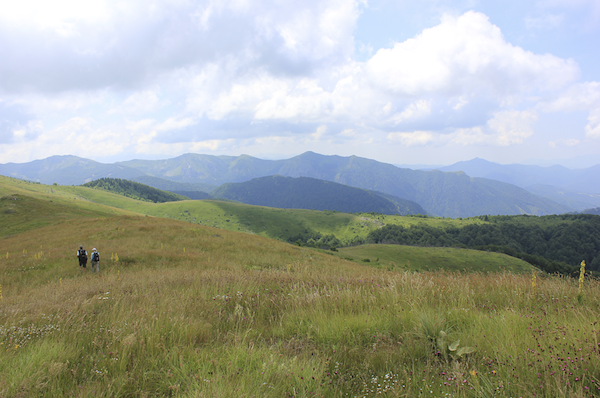 Montenegro countryside
Montenegro countryside
We went to Montenegro primarily because we couldn't think of any reason not to go to Montenegro. The trip was to begin in Sarajevo (Bosnia) and end in Dubrovnik (Croatia), two cities that interested us, and the ground we would need to cover between them seemed well within our capabilities. Our grasp of the political history of the former Yugoslavia was pitiful, and we hoped that being there might clarify things a little. (It didn't.) The only idea that seemed to get wide acceptance was that everything had been better under Tito; he was able to keep the lid on most sectarian grievances, and once he departed from the scene, those erupted with horrifying savagery on all sides.
CORNWALL (2015)
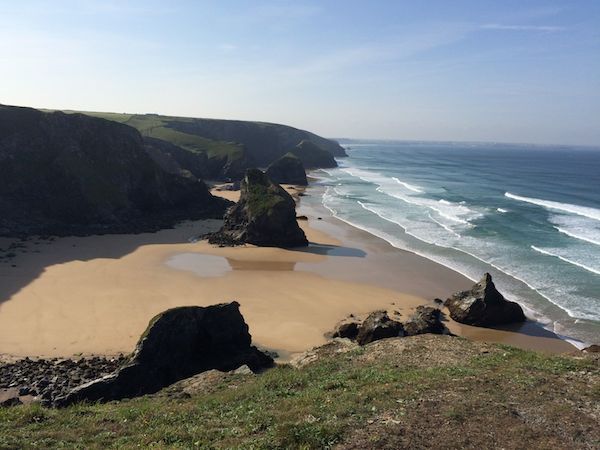 Bedruthan StepsDuring the summer months many Britons willingly subject themselves to hours of traffic congestion on the motorways in order to get to Cornwall, the southernmost county in England. Some do this year after year and wouldn’t dream of going anywhere else. Nor will they have left the crowds behind them once they get there. Why do they do this? We thought they must be on to something and wondered whether it would be just as good off-season? And it was! There were fewer hours of sunlight in September than in June, but that was more than compensated for by having Cornwall almost to ourselves.
Bedruthan StepsDuring the summer months many Britons willingly subject themselves to hours of traffic congestion on the motorways in order to get to Cornwall, the southernmost county in England. Some do this year after year and wouldn’t dream of going anywhere else. Nor will they have left the crowds behind them once they get there. Why do they do this? We thought they must be on to something and wondered whether it would be just as good off-season? And it was! There were fewer hours of sunlight in September than in June, but that was more than compensated for by having Cornwall almost to ourselves.
IRELAND (2016)
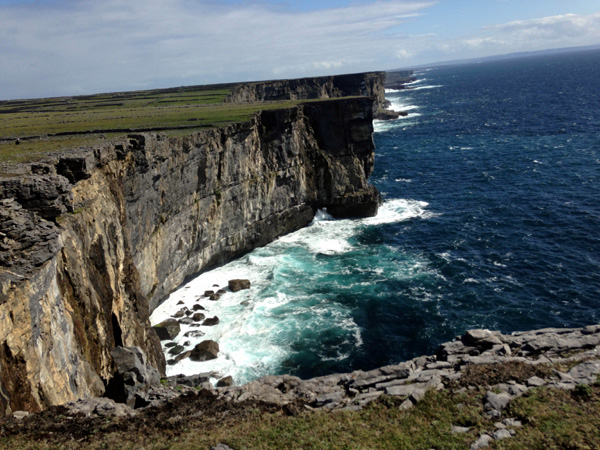 Cliffs of Inishmore, one of the Aran Islands
Cliffs of Inishmore, one of the Aran Islands
How could one travel the world and not include Ireland? Or more correctly, the Republic of Ireland? It would be a grievous omission. It's a country that is both familiar to us through its literature, music and dance, and at the same time mysterious and exotic, through its legends and traditions. And, particularly on the Atlantic west coast, its language. The weather was not as bad as it could have been, and everything else far surpassed our expectations.
JAPAN (2017)
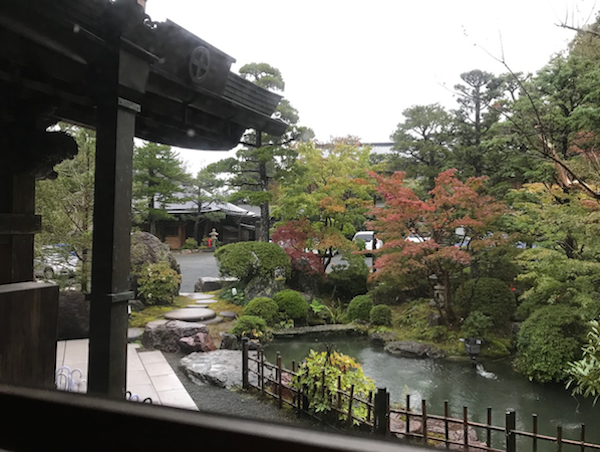 KoyasanWe followed the pilgrimage route of Kobo Daishi, the founder of the Shingon School of Japanese Buddhism. The temples were monuments to the spirituality of the people who built them as well as to the many pilgrims who visited them. Many had stunning and meticulously maintained gardens – quiet oases in which it would have been restorative to spend more time – if it hadn't been raining.
KoyasanWe followed the pilgrimage route of Kobo Daishi, the founder of the Shingon School of Japanese Buddhism. The temples were monuments to the spirituality of the people who built them as well as to the many pilgrims who visited them. Many had stunning and meticulously maintained gardens – quiet oases in which it would have been restorative to spend more time – if it hadn't been raining.
PORTUGAL (2018)
Aros de Valdevez-Gaviera
Our reasons for choosing to hike in the Douro River Valley may have been rooted in hedonism and acceptance of our own physical limitations, but one needs no excuse to explore that part of Portugal. The villages nestled among the wooded hillsides are charming to look at and immaculate to walk through. Some countries wear their soul on their sleeve; Portugal is more discreet than that. But soul it has. And when you walk in Portugal some of that soul will rub off and accompany you for the rest of your life.
